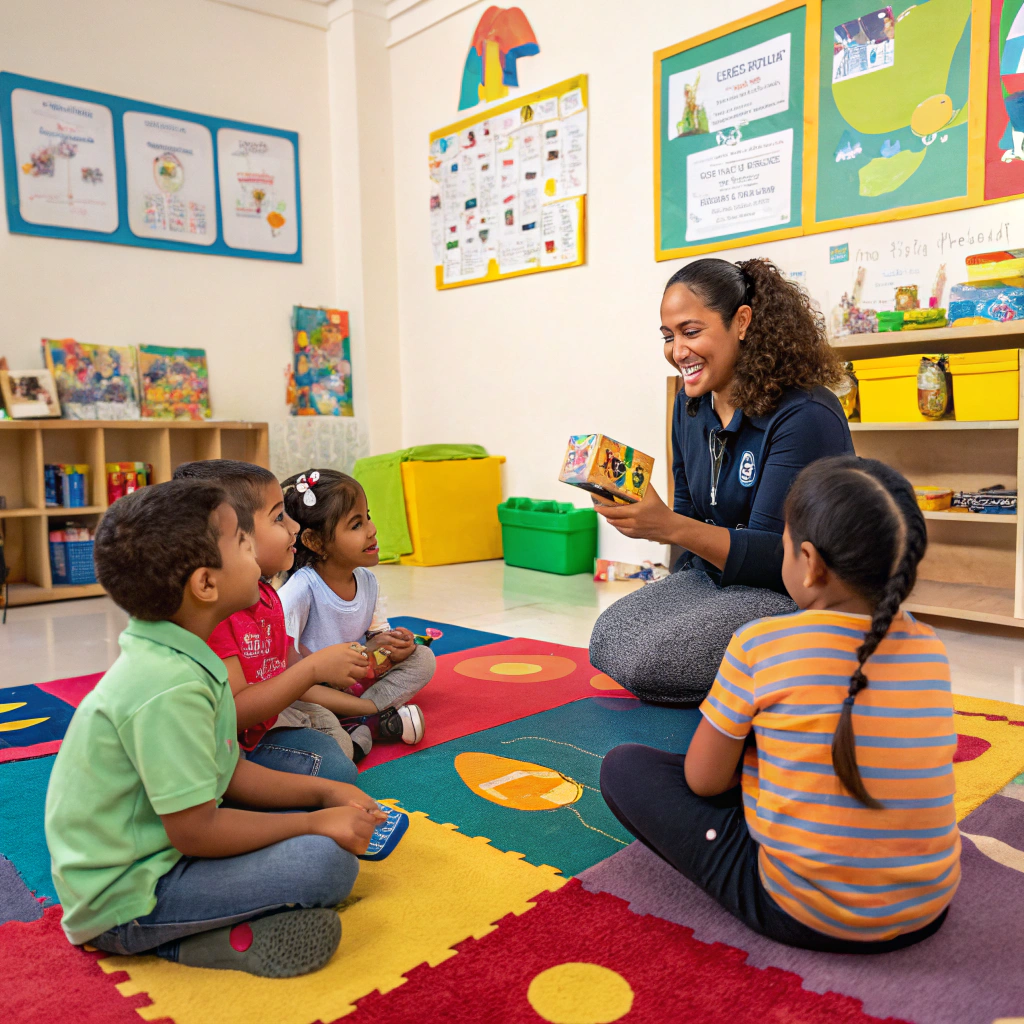Teaching kids to share is a vital part of their social and emotional growth. Learning how to share helps children develop empathy, build stronger relationships, and understand the value of cooperation. While it can be challenging at times, introducing this skill early on sets the foundation for kindness and generosity. In this guide, we’ll explore practical tips and fun activities to help you teach kids to share effectively, making it a positive and rewarding experience for everyone involved.
Why Teaching Kids to Share Matters for Child Development?
Understanding how to teach kids to share starts with recognizing why it’s so important. Sharing is more than just a social nicety—it’s a foundational skill that helps children navigate relationships and work well with others. When kids learn to share, they develop:
- Empathy: Understanding how others feel when they share or don’t share. For example, if a child refuses to share a toy, they may notice their friend’s disappointment, which can help them understand the impact of their actions.
- Cooperation: Learning to work together and take turns. This skill is crucial for group activities, teamwork, and even future workplace dynamics.
- Problem-Solving Skills: Figuring out how to resolve conflicts and negotiate. For instance, if two children want the same toy, they can learn to find a solution, like taking turns or finding another toy to play with.
- Generosity: Building a sense of kindness and giving. Sharing teaches children that giving to others can be just as rewarding as receiving.
By focusing on how to teach kids to share, you’re setting them up for success in school, friendships, and beyond. It’s a skill that will benefit them throughout their lives.
Practical Tips to Encourage Sharing in Kids

Here are some actionable strategies to help your child learn how to share:
- Model Sharing Behavior:
Kids learn by watching adults. Show them how you share with others, whether it’s offering a snack, sharing a book, or taking turns during a game. For example, if you’re playing a board game with your child, demonstrate how to take turns and share the game pieces. - Use Positive Reinforcement:
Praise your child when they share willingly. For example, say, “I’m so proud of you for sharing your toys with your friend!” Positive reinforcement encourages them to repeat the behavior. You can also use small rewards, like stickers or extra playtime, to motivate them. - Set Clear Expectations:
Explain why sharing is important and set simple rules, like “We take turns with toys” or “Everyone gets a chance to play.” Be consistent with these rules so your child knows what to expect. For instance, if you’re at the park, remind them that they need to share the swings with other children. - Teach Empathy:
Help your child understand how others feel by asking questions like, “How would you feel if someone didn’t share with you?” This helps them see things from another person’s perspective. You can also use stories or role-playing to illustrate the importance of sharing. - Practice Patience:
Sharing doesn’t happen overnight. Be patient and consistent in your approach. If your child struggles to share, gently remind them of the rules and encourage them to try again. Over time, they’ll get better at it.
Fun Activities to Teach Sharing in Everyday Life
Make learning to share enjoyable with these engaging activities:
- Turn-Taking Games:
Play games that require taking turns, like board games or building blocks together. For example, games like Candy Land or Chutes and Ladders are great for teaching turn-taking and patience. - Sharing Art Supplies:
Provide a limited number of crayons or markers and encourage kids to share while creating art. This teaches them to work together and share resources. You can also suggest collaborative art projects, like drawing a picture together. - Group Snack Time:
Have kids share a bowl of snacks, teaching them to divide portions fairly. For example, give them a bowl of crackers and ask them to share it with their siblings or friends. This helps them learn about fairness and generosity. - Role-Playing:
Use dolls or action figures to act out scenarios where sharing is needed. For instance, you can create a situation where two dolls want to play with the same toy and encourage your child to come up with a solution. - Storytime:
Read books about sharing, such as The Berenstain Bears: The Trouble with Sharing or Llama Llama Time to Share. These stories provide relatable examples and can spark conversations about why sharing is important.
How to Handle Challenges When Teaching Kids to Share?

It’s normal for kids to resist sharing at times. Here’s how to handle those moments while teaching how to share:
- Acknowledge Their Feelings:
Say, “I know it’s hard to share your favorite toy, but it’s important to take turns.” Validating their emotions helps them feel understood and more willing to cooperate. - Offer Alternatives:
If they’re not ready to share a prized possession, suggest sharing something else instead. For example, if they don’t want to share their favorite stuffed animal, ask if they’d be willing to share a different toy. - Set a Timer:
Use a timer to make turn-taking fair and predictable. For example, “You can play with the toy for 5 minutes, and then it’s your friend’s turn.” This gives them a sense of control and makes sharing less intimidating. - Avoid Forcing It:
Forcing kids to share can create resentment. Instead, guide them gently and celebrate small successes. For instance, if they share for just a few minutes, praise their effort and encourage them to try again next time. - Be Consistent:
Reinforce the importance of sharing regularly, even when it’s challenging. Consistency helps children understand that sharing is a normal part of life.
The Role of Parents and Caregivers in Teaching Sharing
As a parent or caregiver, your role is crucial in helping your child learn to share. Here are some additional ways you can support them:
- Create Opportunities for Sharing:
Arrange playdates or group activities where your child can practice sharing with others. For example, invite friends over and provide toys or games that encourage collaboration. - Be a Role Model:
Show your child how you share with others in your daily life. Whether it’s sharing a meal with a neighbor or letting someone borrow a book, your actions speak louder than words. - Encourage Teamwork:
Involve your child in activities that require teamwork, like building a puzzle or playing a team sport. This helps them understand the value of working together and sharing responsibilities. - Talk About Sharing:
Have regular conversations about sharing and why it’s important. Use real-life examples to illustrate your points, like sharing a treat with a sibling or helping a friend with a task.
Conclusion
Learning how to teach kids to share is a rewarding process that fosters kindness, empathy, and cooperation. By modeling good behavior, using positive reinforcement, and incorporating fun activities, you can help your child develop this essential skill. Remember, every child learns at their own pace, so be patient and celebrate their progress along the way. With time and practice, your child will understand the joy of sharing and the positive impact it has on their relationships.
Sharing isn’t just about toys or snacks—it’s about building a foundation of generosity and compassion that will last a lifetime. Start small, stay consistent, and watch your child grow into a kind and considerate individual who values the importance of sharing.

